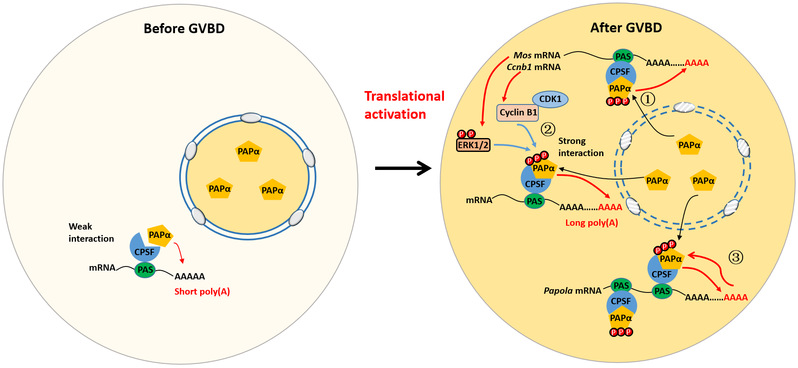During mouse oocyte meiosis, immature oocytes develop into mature oocytes, coupled with follicle development, and eventually arrest at this stage. These oocytes do not resume meiosis until the eve of ovulation under the stimulation of gonadotropin. Then the polar body emission is triggered through asymmetric division in these oocytes, which are capable of fertilization. Oocytes meiotic maturation is vital to successful fertilization. Abnormal chromosomal segregation can lead to embryonic aneuploidy, miscarriage or genetic diseases of offspring.
Meiotic maturation of mammalian oocytes depends on the temporally and spatially regulated cytoplasmic polyadenylation and translational activation of maternal mRNAs stored in the cytoplasm. However, the poly(A) polymerase (PAP) that directly mediates cytoplasmic polyadenylation in mammalian oocytes has not been determined. In this study, we identified PAPα as the elusive enzyme that catalyzes cytoplasmic mRNA polyadenylation implicated in mouse oocyte maturation. Inhibition of PAPα activity impaired cytoplasmic polyadenylation and translation of maternal transcripts and, thus, blocked the meiotic cell cycle progression. In addition, we also revealed that PAPα can promote global mRNA translational activation through triple positive feedback pathway.

First, PAPα was localized in the germinal vesicle (GV) of the fully grown oocytes but nuclear PAPα is released into the cytoplasm to regulate cytoplasmic mRNA polyadenylation after GV breakdown. Second, once an oocyte resumes meiosis, activated CDK1 and ERK1/2 cooperatively mediate the phosphorylation of three serine residues of PAPα—537, 545, and 558—thereby leading to increased activity. This mechanism is responsible for translational activation of transcripts without cytoplasmic polyadenylation elements in their 3¢-untranslated region (3¢-UTR). Third, activated PAPα stimulated polyadenylation and translation of the mRNA encoding its own (Papola), through a positive feedback circuit. ERK1/2 also promoted Papola mRNA translation in a 3¢-UTR polyadenylation signal-dependent manner. Through these mechanisms, PAPα activity and levels were significantly amplified, improving the levels of global mRNA polyadenylation and translation and benefiting meiotic cell cycle progression.



